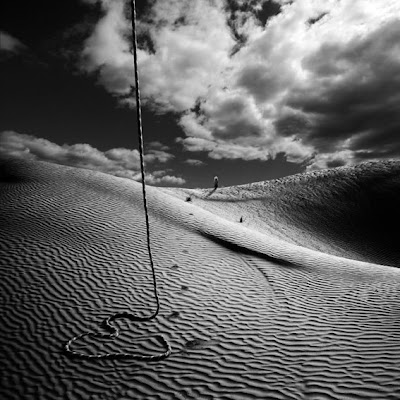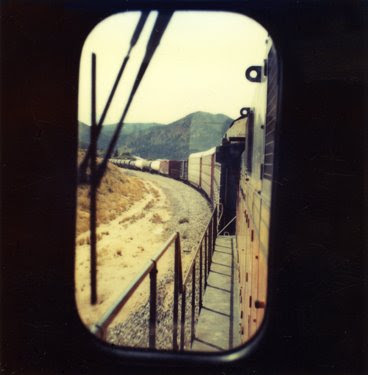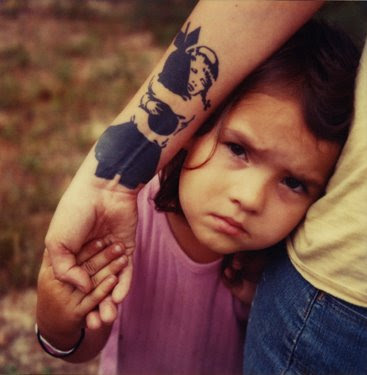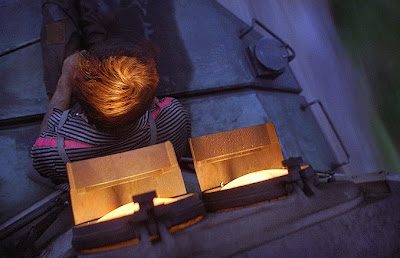



The appeal of Al Magnus' work to a broad demographic is fairly obvious. His broad composition landscapes, in a palette of luminous hi-res pastels, is a sort of softcore surrealism -that is, going through the motions for people who don't like to feel left out without demanding any real involvement.
Magnus' work runs essentially around the same visual concepts as Robert ParkeHarrison's environmentalist work - cynically, many of the pieces feel like glossy, under-realised, shameless rip-offs of ParkeHarrison's The Architect's Brother. Where ParkeHarrison depicts the Everyman's Nightmare, Magnus has gone for the Child's Dream. I feel that I should be more sympathetic, given that my own design logo exactly parallels his, a motif of stars hanging from the sky by threads that he also employs in his image 'Jesters'; but everything in Magnus' world is hanging by a thread, on more than one level.
In terms of technique, his failure to produce aesthetically subtle work has a lot to do with his choice of medium. Blending glossy CGI elements and photographs into a 'photographic' landscape is difficult. Magnus fails to photoshop realistic focus back onto the finished product - his experiments with focus result in either hard patches of gaussian blur or a rather primitive tilt-shift look - and the result is extremely flat. There is something aggressively mundane about a number of the compositions, a common problem of static CGI renders. Clearly some copious effort has gone into the processing of these images, and they are not necessarily amateurish, but neither do they seem to be maturing.
You may also have noticed that, at the size they are presented, it is impossible to make out more than the most rudimentary detail in any of the images. Whilst it may not be prerequisite of fine art that it scale nicely, Magnus does his work absolutely no favours. The loss of detail appears insignificant to his aims; he pushes the concept of each image above its real content.
From alMagnus.com :
Clearly it would be difficult to find the above anything other than nauseatingly whimsical, and it in no way justifies the ugly truth; that Magnus basically started with a mundane set of child's-eye observations and stretched the concept thinner than the sellotape he uses to patch some of these things together. In an interview with Phot'Aix available on his own website, Magnus explains that each of his compositions takes six hours to arrange on his computer; clearly, this just isn't a substantial enough investment of time and energy to produce something of artisitic value and significance.Every picture tells a story.
To tell it, lengths of rope or chain, lightning, ladders, bridges
Jewels are stapled, as mysterious as temples,
or handrails are interwoven. These strands hold together
the pieces of a photographic cloth, weave links,
keeping Man from wandering.
A strand now links Him to his own Universe or Fate.
Pins are threaded. Moon-pins, a lamp-pin. Pins that can suggest.
as disconcerting as puzzles.
On the pieces of that cloth, a world where everything is a link,
apprentice seamstresses pull and the strands rise,
always higher.
The below video from YouTube is a kitsch arrangement of Magnus' and Saint-Exupéry's work to a grainy soundtrack of The Beatles' 'Lucy in the Sky with Diamonds' that successfully reduces all three oeuvres into a clanging mess of trashy star-wipes, and just about summarises the tone of Magnus' collection.
Magnus could quickly profit from injecting some aggression into his vision - his world could benefit from the odd element of dark humour or decay. Right now, shiny though they are, these images are the intellectual equivalent of photographing babies and/or kittens in various miniaturised outfits; only the most fragile of gentle spirits amongst us will, or should, find real comfort in it.
They might look their best as printed wallpaper for a children's nursery, but the small, low-contrast examples made available by Magnus are only tacky postcards from a realm of the quiet dream.
His images are available to view at his website, alMagnus.com, in his photo.net galleries, and in an album by Matta on MyOpera.
also on aS.blogspot








